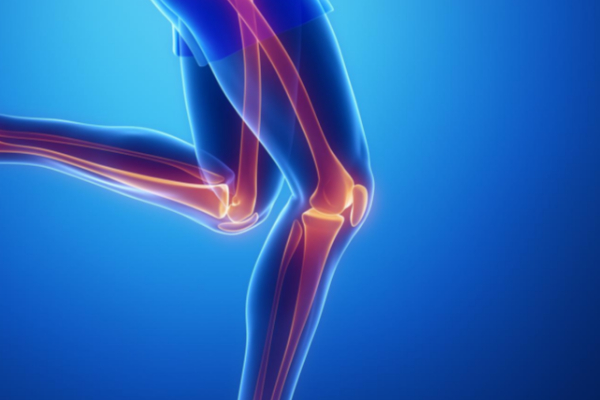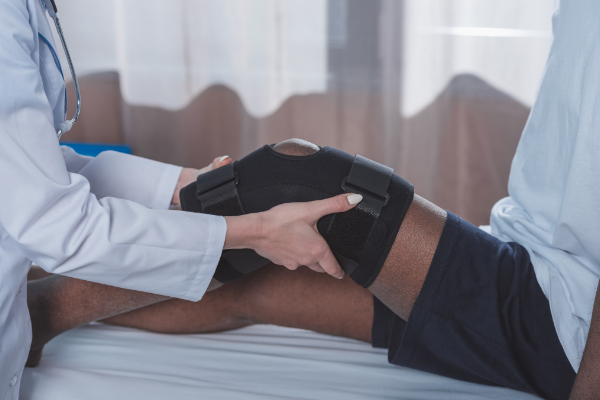Robotic Assisted Partial Knee Replacement
A robotic assisted partial knee replacement is an advanced surgical technique used to treat localised knee arthritis when only one part of the knee joint is affected. Unlike a total knee replacement, this procedure preserves healthy bone and tissue while replacing only the damaged area.
By using state-of-the-art robotic technology, your surgeon can achieve greater accuracy, better alignment, and improved long-term outcomes compared to traditional techniques.

What is a Partial Knee Replacement?
The knee joint has three compartments:
- Medial (inner side)
- Lateral (outer side)
- Patellofemoral (kneecap and front of the thigh)
When arthritis affects only one compartment, a partial knee replacement can be performed. This allows preservation of healthy structures, leading to quicker recovery and a more natural-feeling knee.
Benefits of Robotic Assisted Knee Surgery
Robotic technology enhances the precision of partial knee replacement surgery. Key benefits include:
- Accurate implant positioning tailored to your anatomy
- Preservation of healthy bone and tissue
- Improved balance and stability of the joint
- Less pain and swelling after surgery
- Faster recovery compared to traditional knee replacement
- Reduced risk of revision surgery in the long term
Who is Suitable for Robotic Assisted Partial Knee Replacement?
This procedure is usually recommended for patients with:
- Osteoarthritis limited to one compartment of the knee
- Good range of motion and intact ligaments
- Persistent pain and stiffness despite non-surgical treatment
- Desire to remain active with a quicker recovery
A consultant orthopaedic surgeon will carry out a full assessment to determine suitability.
The Robotic Assisted Procedure
Before
- Detailed imaging (CT or MRI scans) to create a 3D model of your knee
- Personalised surgical plan designed around your anatomy
- Pre-operative physiotherapy to prepare muscles for recovery
During
- Performed under a general anaesthetic
- Small incisions made to access the joint
- Robotic technology guides the surgeon in preparing bone and placing the implant with sub-millimetre precision
- Only the damaged compartment of the knee is replaced
After
- Most patients mobilise the same day with the help of physiotherapy
- Hospital stay is usually 1–2 days
- Crutches used temporarily for support
Recovery After Robotic Assisted Partial Knee Replacement
Short-Term Recovery
- Walking with support within 24 hours
- Return to light daily activities within 2–4 weeks
Rehabilitation Timeline
- 0–6 weeks: Physiotherapy to restore mobility and strength
- 6–12 weeks: Gradual increase in activity levels
- 3–6 months: Most patients return to low-impact sports and full independence
Recovery is typically quicker than with a total knee replacement, with many patients reporting a more natural knee feel.

Risks and Complications
Although robotic assisted partial knee replacement is highly precise, risks include:
- Infection
- Blood clots
- Stiffness or reduced motion
- Implant wear or loosening (rare)
- Conversion to total knee replacement if arthritis progresses
Why Choose Mr Mark Webb for Robotic-Assisted Partial Knee Replacement?
When you choose Mr Mark Webb for a robotic-assisted partial knee replacement, you benefit from:
-
A highly accurate diagnosis and personalised surgical plan using detailed imaging and 3D modelling
-
Use of robotic arm technology that allows precise alignment and implant placement, preserving healthy bone and tissue
-
Minimally invasive techniques for smaller incisions, less soft tissue trauma and reduced pain
-
Access to a structured, tailored rehabilitation programme to help you regain mobility safely and return to daily activities sooner
-
A procedure designed to offer excellent knee function, quicker recovery, and long-term joint health
Frequently Asked Questions
What is robotic-assisted partial knee replacement and how is it different from regular partial knee replacement?
In robotic-assisted partial knee replacement, your surgeon uses advanced imaging (like CT) and robot-guided tools to plan and execute the surgery with high precision. The robot helps guide bone cuts and implant placement precisely according to your anatomy. This tends to reduce error margin compared to manual techniques, preserve more healthy bone/tissue, and improve alignment.
Am I a candidate for robotic partial knee replacement?
You could be a candidate if:
- You have knee osteoarthritis or degeneration affecting just one (or in some cases two) compartments of the knee, rather than all three.
advancedosm.com - Conservative treatments (physio, meds, injections) have not given sufficient relief.
Penn Medicine - Your overall health allows surgery, and you are willing to commit to post-operative rehabilitation.
What are the benefits of doing it robotically?
Some of the key advantages include:
- Greater precision in implant alignment and placement, which helps your knee feel more natural and reduces wear.
- Smaller incisions and less trauma to surrounding tissues, which typically means less pain and swelling.
- Faster recovery: many patients find they can return to daily activities sooner with robotic techniques.
- Potentially longer lifespan of the implant, because better alignment and bone preservation reduce stress on the artificial parts.
What should I expect during recovery and how long will it take to return to usual activities?
Recovery varies depending on how much work was needed, how well surgery goes, and how closely you follow rehab. Generally:
-
You may begin walking with some support soon after surgery.
-
Swelling and discomfort are expected early, but robotic techniques may reduce these.
-
Daily low-impact activities might be possible within a few weeks; more strenuous activities or sports might take several months.
What are the risks or downsides of robotic-assisted partial knee replacement?
While robotic techniques bring many benefits, there are downsides to be aware of:
-
Not all patients are suitable; if more of the knee is damaged, a full knee replacement may still be needed.
-
Robotic surgery may cost more or may not be available everywhere.
-
There is still the risk of complications (infection, problems with healing, implant misalignment if something goes wrong).
-
Over time, the other compartments of the knee (if not replaced) may develop issues, potentially requiring further surgery.

